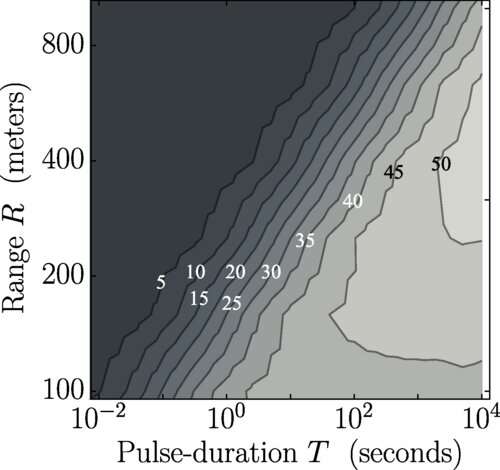January 10, 2022 report
A new look at quantum radar suggests it might boost accuracy more than thought

A combined team of researchers from the University of Arizona and MIT reports that quantum radar might be able to boost the accuracy of radar systems more than has been thought. In their paper published in the journal Physical Review Letters, the group describes a new approach to developing quantum radar and the obstacles that stand in the way of its development.
Radar works by firing microwave radiation at an object and then measuring the signals that bounce back from it. And while quite effective for many applications, it still falls short for long-distance applications. Over the past few decades, as scientists came to learn more about quantum entanglement, some suggested it might be used to improve radar systems. And indeed, sending just one of two paired photons to a target improves the certainty of the signals received. Unfortunately, the gain (approximately 2 to 4x) was not worth the extra cost of adding quantum abilities to a radar system. In this new effort, the researchers found that using entanglement in another way could boost its accuracy by up to 500 times that of current systems.
Researchers determined that accuracy could be improved by stretching the pulses (bunches of photons) that are sent to a target. This involved sweeping the radar frequency from high to low as the pulse was being generated and sent, which stretched the photon in time, allowing its frequency to be better defined. This also led to its partner being better defined, resulting in greater certainty of the signal. The researchers note that the reason this approach could work is because statistical variation is used in detection, narrowing variations in detection.
Unfortunately, despite their work, the researchers acknowledge that there is still one hurdle to overcome before quantum radar can become a reality—a means to emit more photons from a source—current systems emit photons at approximately 1 million per second. A quantum radar system would require a device capable of emitting photons at a rate several orders of magnitude higher.
More information: Quntao Zhuang et al, Ultimate Accuracy Limit of Quantum Pulse-Compression Ranging, Physical Review Letters (2022). DOI: 10.1103/PhysRevLett.128.010501
Journal information: Physical Review Letters
© 2022 Science X Network



















